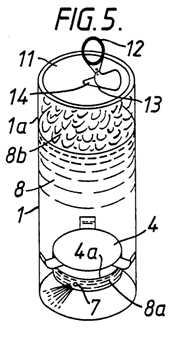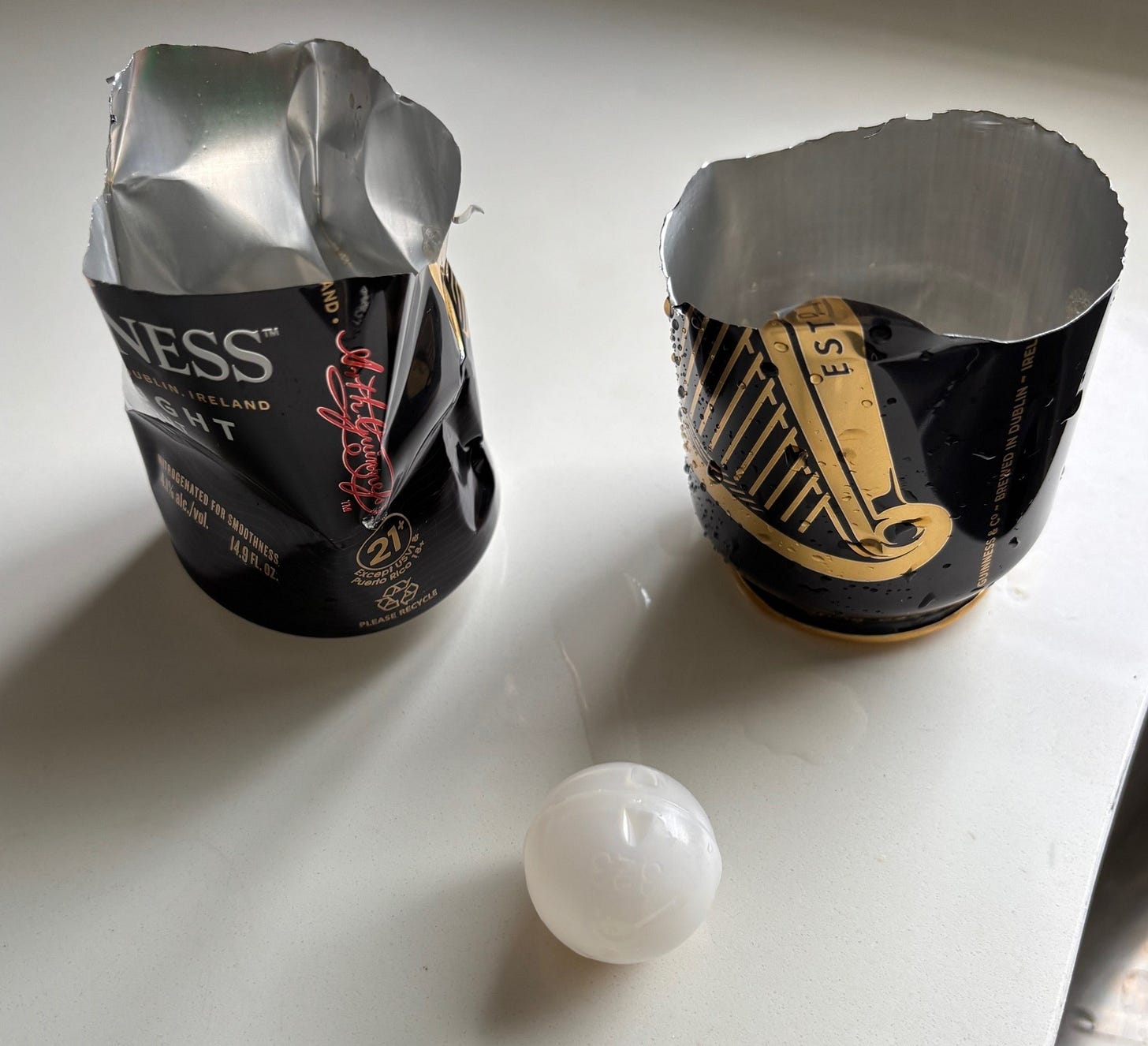The Guinness Widget Patent – US 4,832,968 (1989)
Will you be (or are you currently) celebrating St. Patrick’s Day with a pint of Guinness Draught stout? If you’re at home and pouring your pint from a can this year, you can still enjoy Guinness’s creamy nitro head. That’s thanks to a beer widget.
The widget (yes, that’s actually what it is called) is the subject of this week’s (inaugural) patent of the week: US 4,832,968 (the ’968 Patent), Beverage package and a method of packaging a beverage containing gas in solution. This patent represented the first commercially viable solution in a years-long research and development effort to figure out how to offer a creamy nitro beer head in bottled or canned beers.
First, a bit of background. Nitro beers have much smaller bubbles than carbonated beers, offering the stable, creamy head that is a signature of Guinness’s flagship beer. But, because nitrogen is more stable in solution than carbon dioxide, a nitro beer requires more agitation to liberate the nitrogen from solution, and simply pouring the beer from a can into a glass isn’t enough to do the trick. The ’968 Patent calls out this problem, explaining that conventional beer cans can create little or no froth or head, which it characterizes as “somewhat unattractive and unappealing.” An understatement, surely, when you’re talking about Guinness Draught stout, whose silky, cascading foam is iconic (not to mention scientifically fascinating).
To address the lack of nitro head formation in canned beers, the ’968 Patent describes Guinness’s widget solution. Specifically, the patent describes a “hollow pod 4 having a restricted aperture 7” that is located inside a beverage can, explaining that liquid “enters the pod 4 … by way of the aperture 7” when the can is pressurized and sealed. Upon opening the container to drink or pour, “the pressure differential resulting from the pressure in the pod headspace 4a causes gas/beverage to be ejected from the pod (by way of the aperture 7) into the beverage 8,” and “said ejection causes gas to be evolved from solution in the beverage in the main container chamber to form a head of froth on the beverage.”
The ’968 Patent also describes a few interesting configurations, including the pod being fixed at the bottom of the can by a set of flexible tabs gripping the side walls of the can. The pod aperture size is noted (quite precisely) to be ideally 0.061 centimeters. And, the patent uses some very colorful (or, colourful?) language to describe gases being liberated from solution:
Such ejection of beverage through the restricted orifice provides a greater efficiency in the development of the head in a liquid supersaturated with gas than will the ejection of gas alone through the restricted orifice; the reason for this is that the restricted orifice provides a very active site which causes the beverage to “rip itself apart” generating extremely minute bubbles which themselves act as active sites for the beverage in the primary chamber … .
(bold emphasis added).
The Guinness ’968 Patent is just one of many beer widget innovations. In fact, Guinness’s first beer widget patent (describing an early version of the widget that never proved commercially viable) issued in the UK in 1972 (GB1266351), while today’s “floating” widget that rattles around in modern cans of Guinness has an even different look.
Today, we raise a glass (or a can) to inventors Alan J. Forage and William J. Byrne and their 1989 widget patent.
Sláinte!




